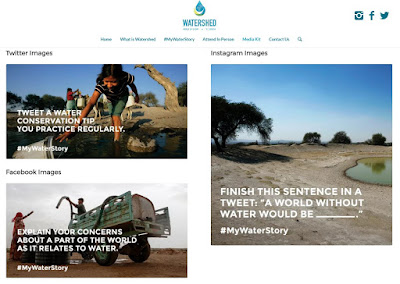Two weeks ago, we were fortunate to connect with the people behind #MyWaterStory.
We know that every person has a story, and water has a story. So we were thrilled to get involved with the #MyWaterStory movement.
As they explained it, water stories are personal. Water stories are shared experiences across languages, religions, and geographical locations.
They want to find out: What does water mean to individuals around the world? What role does water play in daily life?
This collection of global water stories will show the world how water affects life, communities, and cultures.
#MyWaterStory is engaging global audiences in a social media conversation leading up to Watershed — the World Water Day activities co-hosted by the Vatican and the Club of Rome on March 22, 2017 — and to inform other water-related events throughout the year.
#MyWaterStory program is designed to help capture and reset the basic understanding around the value and values of water. Where are the values and value strongest, where is the underlying story lacking? And why? It does this by creating new networks, generating inspiring, lasting stories, educating and engaging a younger international audience, and making relevant the urgency for action by policy makers, innovators, and the public.
Through #MyWaterStory, individuals — especially students — around the world share their stories, artistic work, video, or other multimedia content related to the value of water in their lives.
You can upload your own water story on worldwatervalues.org/mywaterstory or share via social media using the hashtag #MyWaterStory.
Check out the website for more information, including:
- Opportunities for people from around to participate in the conversation.
- Six water themes, which each include prompts to respond to through Twitter, Facebook and Instagram using #MyWaterStory.
#MyWaterStory is led by: Circle of Blue, Ball State University, Project WET Foundation, Columbia University, Texas A&M, GWU, UNESCO, UN Water, WWAP, Wilson Center, and other international education networks.



No comments:
Post a Comment